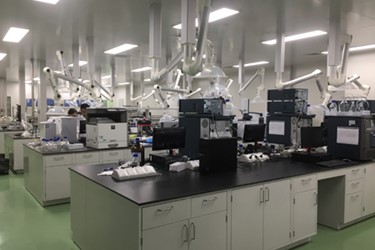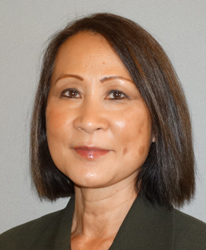China Biopharma: Recognizing The Past, Recasting The Future

By Louis Garguilo, Chief Editor, Outsourced Pharma

Midstream our investigations on China, I’ve been speaking with BeiGene, Ltd.’s Diana Francis, Vice President, Quality & Compliance. The first part of that discussion is here.
Below we turn Francis’ attention to the specific concerns with outsourcing within China: IP theft, and quality breaches. Then I’ll wrap up our overall discourse to date, with two observations on what we’ve learned this past year about China’s growing connection to the global biologics industry.
That connection, as they say, has become front-page news ... and a great deal of it has been less than positive.
“China coerces the transfer of, or outright pilfers, IP and technology,” is not an unusual accusation originating from fringe elements; it’s espoused by experienced and knowledgeable people in our industry. Quality failures in China – some resulting from actual intended actions and others from malpractice of quality standards – have been publically documented.
And so I start this discussion by asking Francis directly: “How do you deal with this?”
Her candid replies make for informative reading.
The Truth About Theft
 “No doubt severe quality breaches, and IP theft, have and can happen still in China,” starts Francis. “In my previous work [she’s been at Genentech/Roche, Theravance, and Medivation, involved in commercializing a number of innovative drugs], as a strategic approach, we accept that an IP concern is definitely involved in our discussions. We’ve always stressed that when we outsource to a China-based CMO particularly, we ask: ‘What is your IP policy and your detailed strategy for enforcement?”
“No doubt severe quality breaches, and IP theft, have and can happen still in China,” starts Francis. “In my previous work [she’s been at Genentech/Roche, Theravance, and Medivation, involved in commercializing a number of innovative drugs], as a strategic approach, we accept that an IP concern is definitely involved in our discussions. We’ve always stressed that when we outsource to a China-based CMO particularly, we ask: ‘What is your IP policy and your detailed strategy for enforcement?”
But even with the strongest of statements that there is no nefarious behavior and protections are in place, “when it came to outsourcing small-molecule projects, whenever possible our strategy was to apportion the process across different service providers. You pick your raw material and intermediate suppliers, and then assemble your API at a different location and CMO. Drug sponsors have to stay as safe as possible from IP theft.”
Francis adds that while concern is heightened in China, there can be issues no matter what country you outsource to.
“Brazil, for example, will just tell you upfront, ‘If you're going to outsource to us, we need to be able to transfer that technology to our country.’ That’s the policy; if you go to Brazil, you know at some point you have to look at the domestic company making your drugs,” Francis says.
“My advice for outsourcing – no matter where you are doing it – is to monitor the CMO’s employees to the extent possible. They have the know-how, and they are the ones who might share that information, for whatever reason. Clearly, this is still in the back of our mind when we are dealing with some CMOs in China. We are careful. Our legal and technical folks as well have a very good understanding of that concern.”
Then after a pause: “But I can honestly say, attitudes are changing there, and most importantly, are being led from the top.”
Guidance From Above
What does “led from the top” mean in China? Regulatory leadership is one example.
“We all recognize that putting regulations and systems in place is one thing. Seeing they are enforced, punishing those who do not enforce them, and alerting everyone to any non-enforcement, are different matters,” says Francis.
“In China, while blame for past or lingering quality issues starts at the sites of the breaches, that blame spreads to the regulatory authorities. That’s now very much understood.”
I ask Francis if the recent reorganization, and name change of the “China FDA” to its new designation, National Medical Products Administration (NMPA), is in fact meaningful to a company like BeiGene, in material and/or symbolic ways.
“Yes,” she replies, and quickly mentions the vaccine scandal that transpired recently, where “very important people in the agency as well as the company involved,” were all held accountable for malfeasance.
“First, the government sincerely considered this an embarrassment to the China FDA, and China as a country,” Francis explains. “Now it’s very much the top of China demanding we do not accept this kind of behavior, or allow these situations to arise.
“What I'm optimistic about,” she continues, “is we see this being related directly to a broader goal – one of eliminating any stigma that the U.S. FDA or EMA have towards China’s regulatory enforcement. The NMPA is in fact making this a case study of sorts, in public. They don't want this to happen. Things take time to change, but I think the country collectively desires moving to an innovative, and that means higher quality, economy, and not just one that exports inexpensive products to the rest of the world.”
Francis believes biopharma, i.e., innovative new therapies and drugs, can be a leader to this new reality.
“I've been working in China for twenty-plus years,” concludes Francis. “I worked at Genentech years ago, and a long-term China strategy was already evident. Today, the regulatory landscape is in fact changing. The government encourages companies to be more innovative, and that means leading on quality, and yes, IP protections. The government is receptive to helping its domestic companies make new drugs – not just generics, me-too’s, or biosimilars. I see the environment in China right now is very much into innovation. That certainly includes biopharma, and the CMOs here.”
Epilogue
As we head into 2019, I’d select these as our top two learnings from our months-long pursuit to understand the challenges, opportunities, and lay of the land in China:
1. China has hit the restart button with the emergence of large-molecule capabilities, and deemphasizing its small-molecule legacy (although there certainly remains a robust small-molecule outsourcing industry).
The change is from a CDMO-led, materials-maker and low-cost champion – cursed at times by lapses in quality, safety and IP protection – to an era of biopharma that comes with the self-realization there’s the need to improve operations, and set FDA and EMA standards/regulations as the bar.
This renaissance has begun with the building out of the most advanced facilities and equipment, and, we should add, loads of help from Big Pharma looking to take advantage of the China-domestic market.
2. At the same time, the current U.S. administration, and an informed, increasingly vociferous U.S. public, confronts China directly on international business and safety practices. This editor believes this is as it should be, and certainly overdue.
With this focus, and the fact that both the U.S. and China are placing additional emphasis on health care and drug supply chains (and of course pricing), we can be sure of one thing: our industry will stay on the front pages.
Perhaps, then, our segment of the biopharma industry – the actual contracting with partners for drug development and manufacturing – can lead in overcoming some of the challenges emanating from China.
